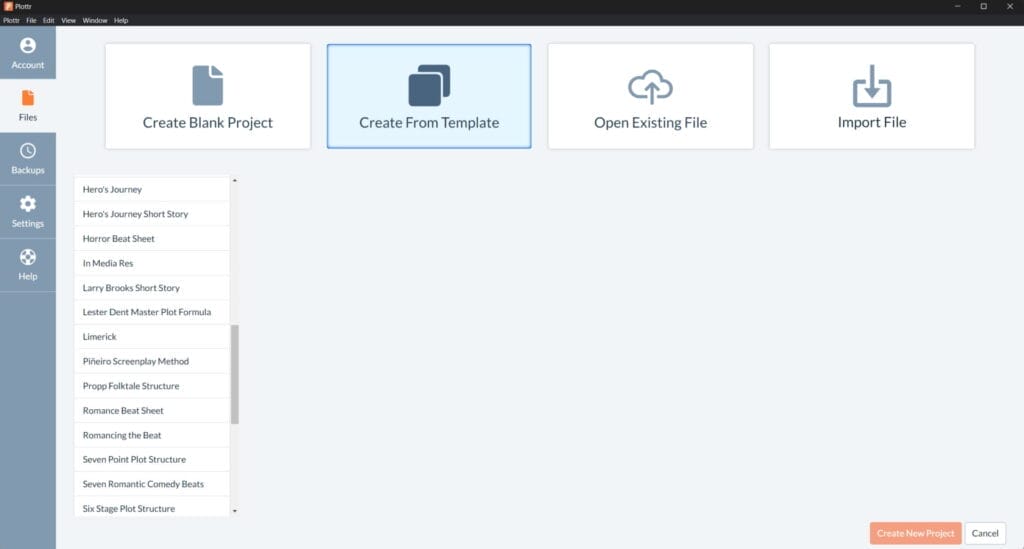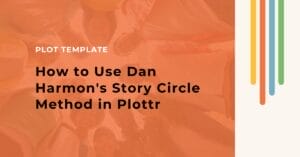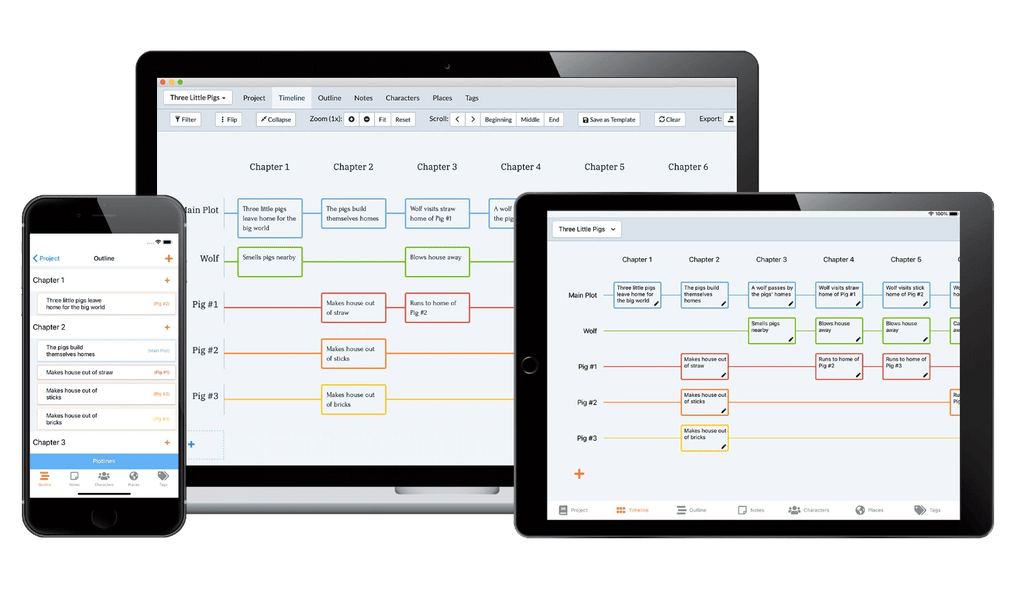There are few types of writing more rewarding than writing for children. You’re able to entertain, enlighten, and inspire young readers with new ways of looking at the world. A children’s book plot template will help you ensure you connect with young, open-minded audiences that are hungry to learn about themselves and others.
But don’t believe the old myth that it’s easier to write for kids than adults! Many young readers have short attention spans and it can be a real challenge to keep them engaged. Fortunately, a little story planning and organizing will go a long way.
What is Plottr’s Children’s Book Plot Template?
The Children’s Book template provides a basic structure, or framework, you can use to organize your story. It consists of three acts:
- Act 1 introduces the main characters as well as the central story problem
- Act 2 consists of a beginning, middle, and end, and involves various attempts the character makes to solve the problem
- Act 3 contains the story climax as well as a final resolution to the story
Who is the Children’s Book Plot Structure for?
Are you a writer who dreads the idea of a formal outline — but you still want to plan out where your story needs to go? Are you somewhere between a plotter and a panster? A … “plantser”, perhaps?
If the above sounds like you, this plot template will be perfect for you. (And here’s a pro tip: it works with any genre!)
Let’s take a closer look:
Plot Points of the Children’s Book Structure
This children’s book outline guide consists of seven sections designed to circle around problems and solutions (the way many children’s stories do). Let’s explore:

Part 1: Introduction
The beginning of your story must hook the reader and introduce the protagonist (usually a child or an animal).
Since children’s books cover the gamut — from picture books for the youngest crowd to middle grade for tweens — the ages of your main characters may vary.
Keep in mind that kids love to read about characters a bit older than themselves, so make sure to keep your protagonist age-appropriate. Remember, too, that kids of any age (and many adults, too) won’t sit still for long, rambling beginnings or paragraphs of description. It’s best to dive right into the action from page one.
Example: Amala is playing with an old set of toys in her bedroom with her friend Carolina as it rains outside. They are bored and biding their time until the rain stops so they can go outside and play in the puddles.

Part 2: Problem
Introduce the reader to the central story problem that must be solved. Make it age-appropriate and relatable.
For example, dealing with a school bully could be a major problem for a twelve year old, but to a kindergartner, the loss of a beloved teddy bear could feel just as big.
Build tension by letting the reader know what will happen to the main character if the problem isn’t solved.
Example: The rain stops, and the girls run to the front closet to get their boots – only to find Amala’s new boots missing! Amala knows she’ll be in trouble if her parents discover she’s lost the boots, and they only have a short period of time to play before Carolina has to go home.
Part 3: Solution 1
Whether on their own or with the help of friends, the protagonist tries to come up with a solution to the problem. Unfortunately, it doesn’t work.
Remember the rule of three: the main character might attempt and fail three times before finally succeeding.
Try to see the problem through the eyes of a child and consider age-appropriate solutions they would be likely to attempt. Even if your story focuses on a serious theme, sprinkle in a liberal dose of humor. Kids love to laugh and be silly.
Example: After the initial shock of discovering the boots missing, Amala runs out to the front porch with Carolina to see if she left them there to dry after the last rain. They look everywhere, but the boots are nowhere to be seen.
Part 4: Solution 2
The protagonist makes another attempt to solve the problem and fails again, raising the stakes.
Remember to keep the possible consequences of failure age-appropriate. Unless you’re writing a young adult thriller, the fate of the whole world likely won’t hang in the balance.
Example: Remembering that her mom and dad get upset when she leaves her stuff lying around, Amala thinks maybe her mom put her boots in her bedroom closet. They return to Amala’s room, open the closet, and find it is a mess.
The girls pull everything out of the closet, but the boots are not there and time is slipping by as they have to put everything back again.
Part 5: Solution 3
This is when the main character tries what they consider to be a fool-proof solution and ends up failing yet again. By this time they’re discouraged, feeling a bit hopeless, and afraid that they will indeed have to face the dreaded consequences.
Don’t forget to keep the problems, solutions, and reactions relatable and within the range of a child. Expecting a ten year old to stop his parents from divorcing perhaps isn’t the most realistic scenario.
Example: As they clean the room again, Carolina suggests that Amala stops and closes her eyes, to think about the last time she had them, and mentally retrace her steps. It’s a technique Carolina’s father taught her and it works almost every time.
Amala does that and remembers she saw her boots the previous day by the backdoor, close to the basement steps. The girls run to the backdoor to get the boots and once more see that they aren’t there.
Part 6: Climax
This is the very lowest point; the darkest moment for the protagonist, when all seems lost and they’ve given up.
The climax should also pave the way for the resolution, though (although the character doesn’t realize it at the moment).
Example: Amala wants to cry. With the sun now shining brightly outside, she apologizes to Carolina for not being able to find her boots. She is resigned to being scolded for losing them, as the friends give up hope on playing in the puddles outside.
The friends begin to walk back to Amala’s bedroom and stop, deciding to go downstairs to play in the basement instead.
Part 7: Resolution
Using all they’ve learned, the main character makes one last stab at solving the problem and finally succeeds. It’s vital that the resolution is driven by the child protagonist, not an adult.
Now that the problem has been solved, you can show the protagonist enjoying the fruits of their labors and then wrap up the storyline.
Example: As the girls get to the top of the stairs, they hear Amala’s dog barking and growling at something. They run down into the playroom and find the dog in his bed, playing with Amala’s boots! He must have taken them from the top of the stairs.
Amala runs over to hug her dog as Carolina saves the boots. They run back upstairs and head outside to play, while Amala promises herself and Carolina that she’l keep her boots put away in her closet from now on.
How Do You Use the Children’s Book Plot Structure Template?
First, make sure that you have an active Plottr membership plan or sign up for a free trial.
Then, to use the Children’s Book Plot template in Plottr:
- Step 1: From the Plottr dashboard, select Create from Template

- Step 2: Scroll to the template Children’s Book Plot, select it, then choose Create New Project
- Step 3: You will see story beat cards in a plotline. Hover over a card to see its contents, and click a card to begin adding your own ideas

- Step 4: Continue to fill out all your beat cards with ideas (you can also export your finished outline to Word and continue fleshing the story out there!)
The children’s book plot template works well with other character and plot templates, such as:
Use Plottr templates to build out character and subplot ideas that will give your story engrossing depth and detail.
Ready to Put Your “Plantsing” Skills to Work?
You’ve got all the tools you need to organize your new children’s book. All that’s left is to start a free trial of Plottr and get to writing.
You can also join us for free weekly tutorials on how to use Plottr, and catch further video tutorials on our YouTube channel. If you used this template and found it helpful, let us know in the comments!









Comments